|
||||
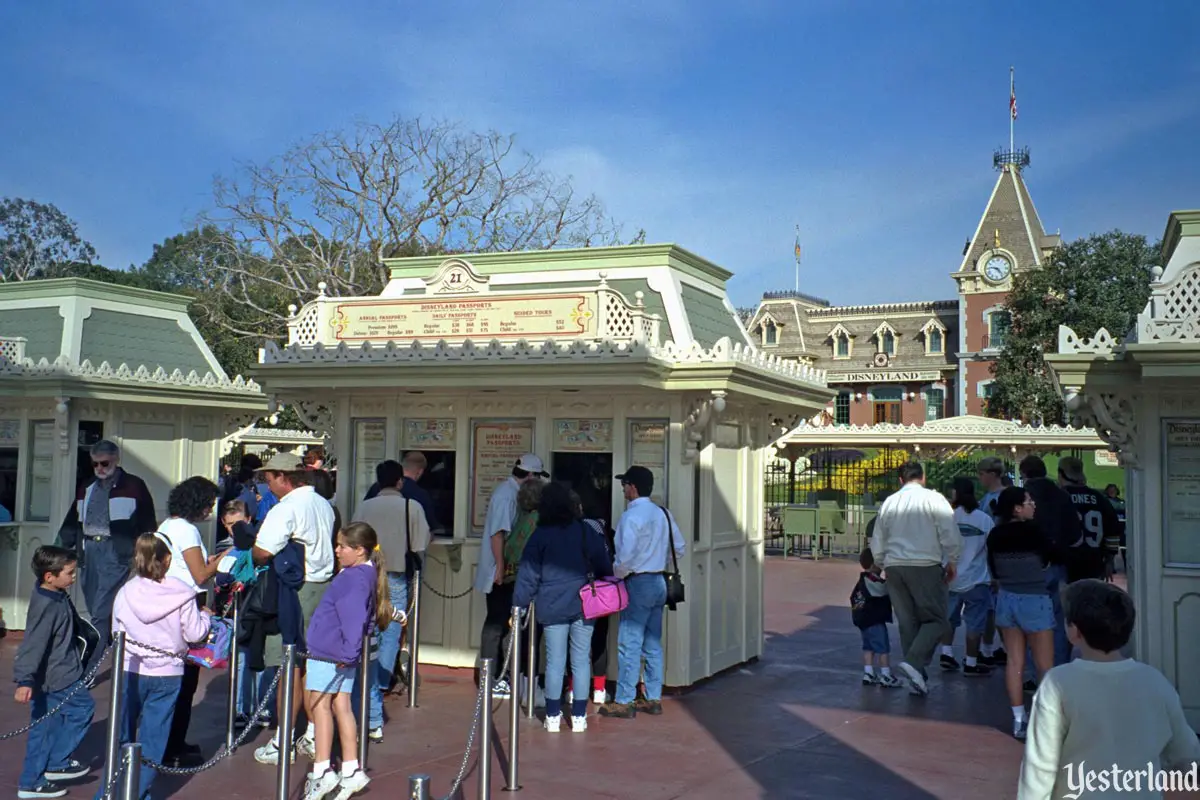
Photo by Werner Weiss, 1998 |
||||
|
You just parked your car in Disneyland’s convenient parking lot, directly in front of the park. After a walk or short tram ride, you arrive at the ticket booths. |
||||
|
|
||||
|
Here’s a helpful hint: Don’t get in line at the first open ticket booth you see. Keep walking. Other guests are arriving from the same direction as you, and the lines tend to become shorter if you walk a little farther. |
||||
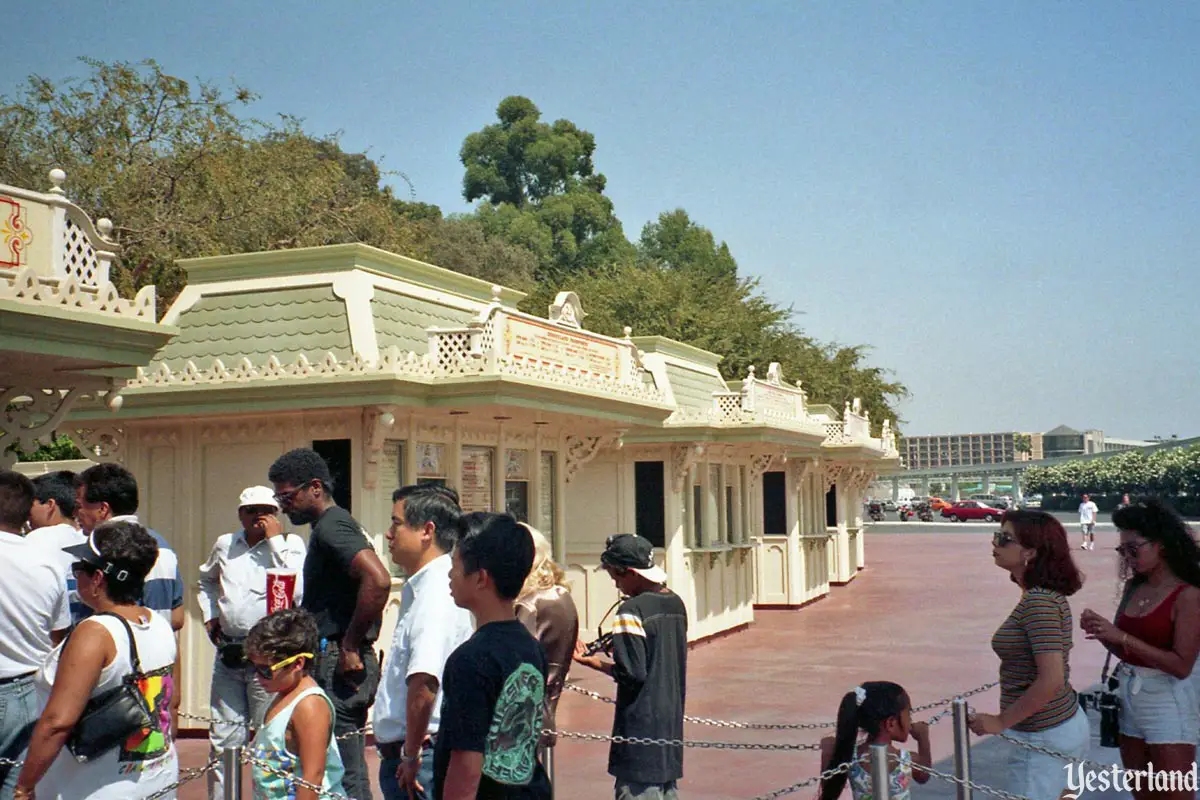
Photo by Chris Bales, 1992 First line of the day |
||||
|
But don’t walk too far. Just as your supermarket only opens enough checkstands to handle the demand, Disneyland opens just enough ticket windows. You need to decide if you want just General Admissions or ticket books that provide a day’s worth of attractions in addition to admission — the “Big 10” or the “Deluxe 15.” Remember, if you don’t use all your tickets today, you can save them for your next visit. They never expire. |
||||

Photo by Chris Bales, 1993 Closed ticket booths |
||||
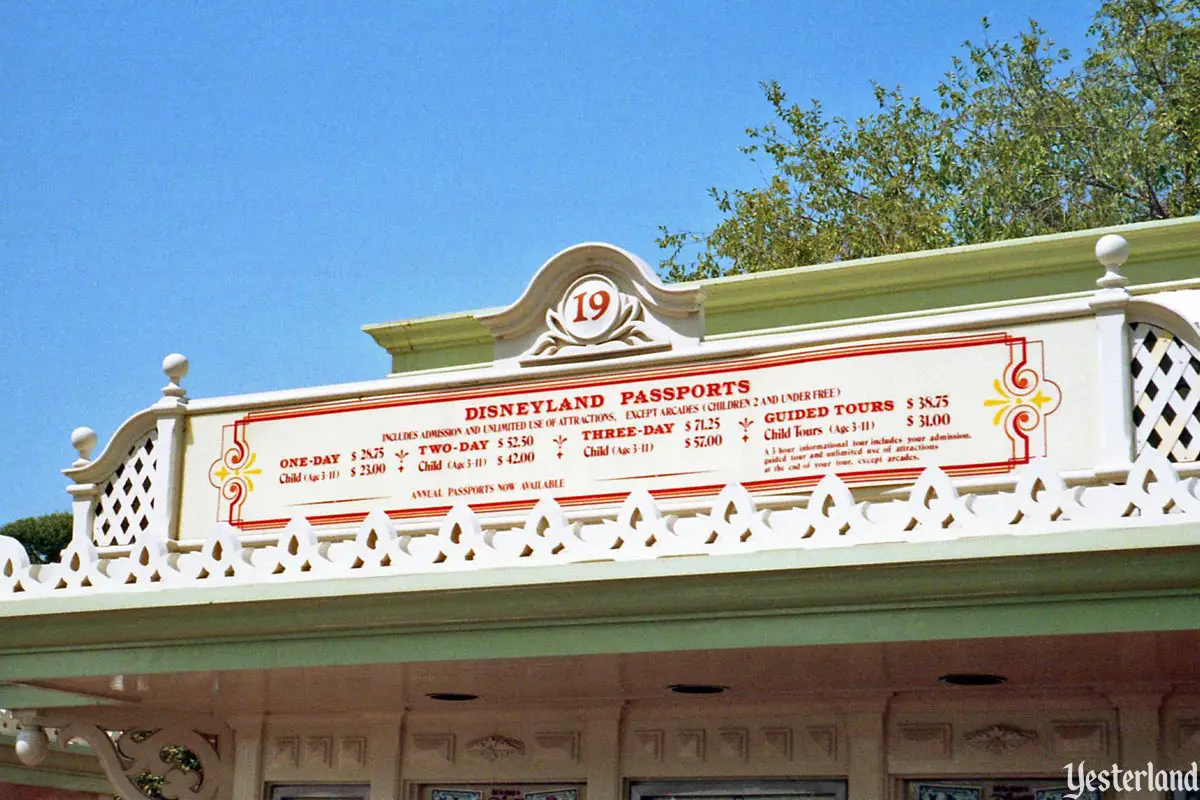
Photo by Chris Bales, 1992 One-Day, Two-day, Three-Day, or Guided Tour? |
||||
|
If you’re accustomed to ticket books, but you arrive after the introduction of unlimited attraction Disneyland Passports, you no longer have to predict how many rides you expect to go on. But you have a new decision to make: how many days do you want? The price per day goes down as you buy more days. |
||||
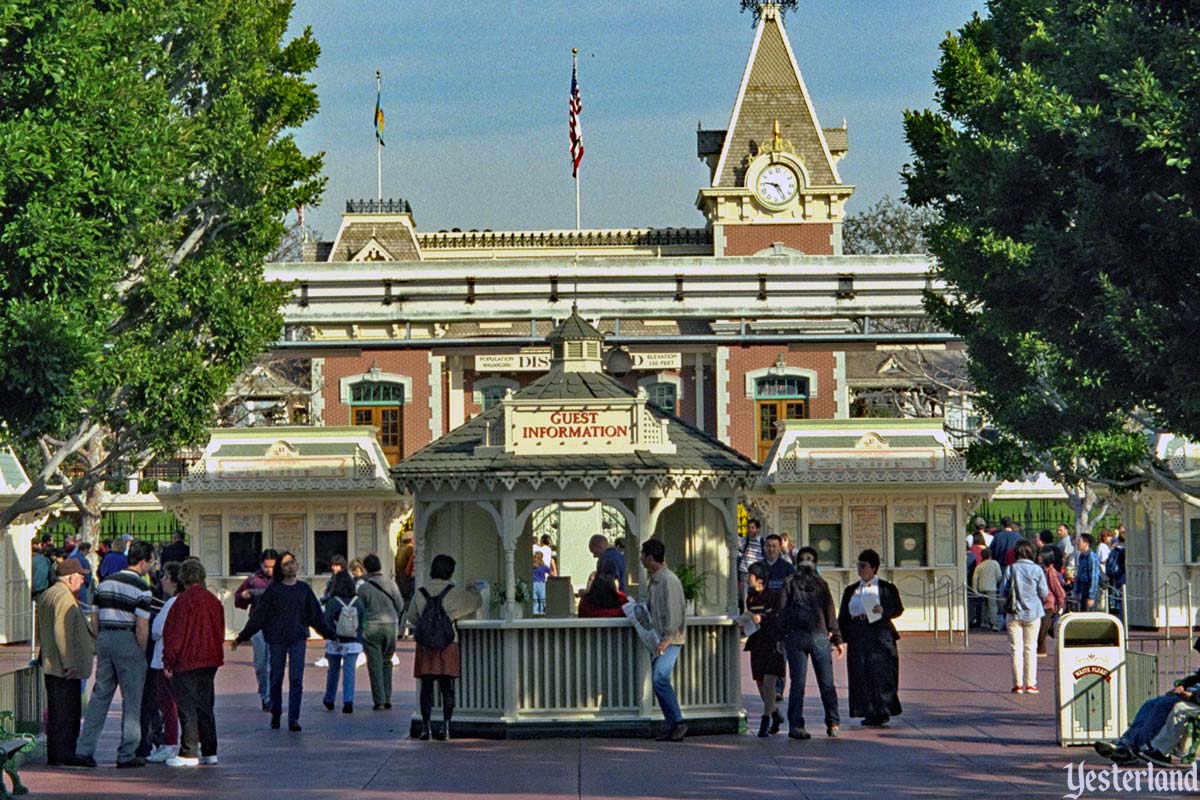
Photo by Werner Weiss, 1998 Guest Information kiosk |
||||
|
If you need some advice, stop by the Guest Information kiosk before you head to a ticket booth. You’re likely to feel some excitement when you leave the ticket window. After all, your ticket purchase was the last thing standing between you and the park entrance. |
||||
|
|
||||
|
There have been four generations of ticket booths at Disneyland. The original booths were narrow when viewed from the front. They had side-facing ticket windows on their left and right sides. Their wide, flat roofs provided some shade to guests at those windows. But the main benefit of those roofs was to keep the sun from baking the cast members who worked in the unair-conditioned booths. |
||||
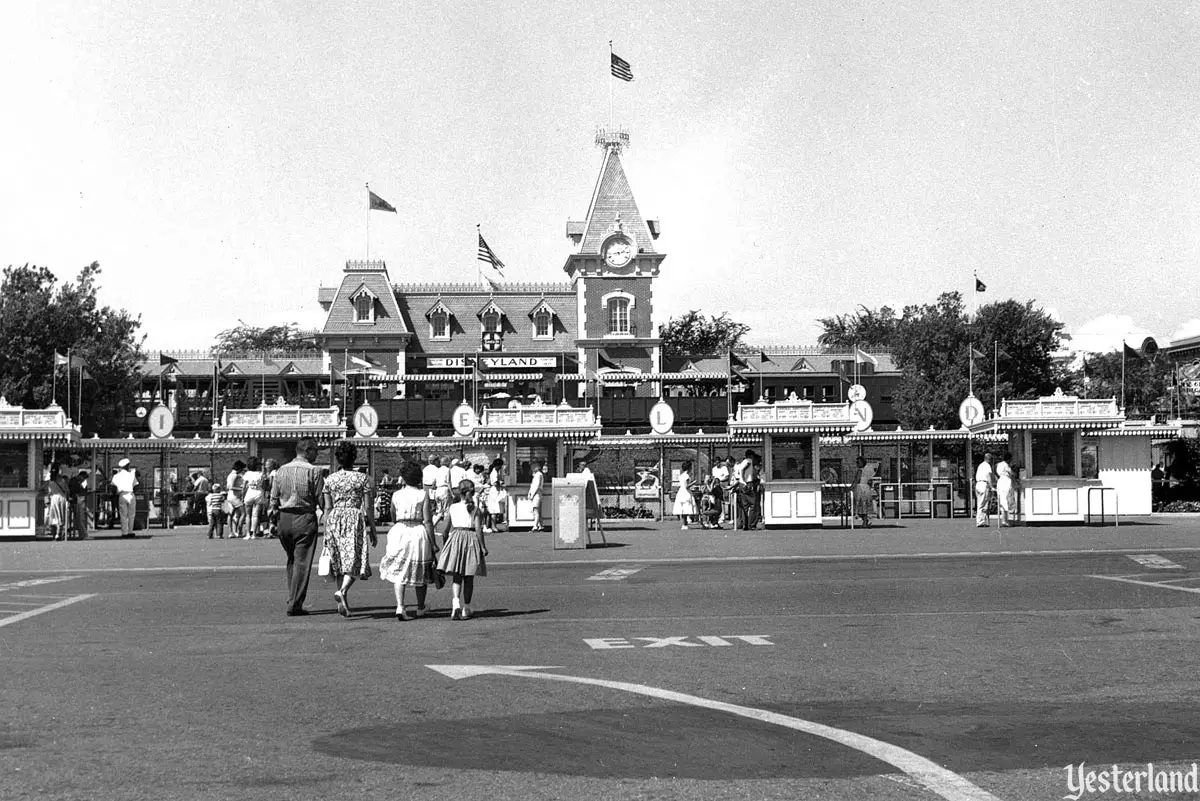
Photo, circa 1960, courtesy of Orange County Archives First generation Disneyland ticket booths, still in use in 1960 |
||||
|
When the park opened to the public on July 18, 1955, ticket booth transactions were quick and easy. There were no decisions to make because there were no ticket books, no multi-day tickets, no guided tours, no Magic Kingdom Club options, no Disney Dollars, and no annual passes. You told the ticket seller how many of each general admission you needed and paid with cash — or perhaps you paid by personal check, which took longer. The prices were $1 for adults, 75 cents for juniors (12 though 17), and 50 cents for children (3 through 11). Once inside the park, you could buy tickets costing between 10 cents and 35 cents at each attraction. With the introduction of ticket books on October 11, 1955, Disneyland guests could still choose just general admission — or they could choose “A Day at Disneyland” ticket book priced at $2.50 for adults, $2.00 for juniors, and $1.50 for children. Each book had general admission and eight attraction coupons — three “A,” two “B,” and three “C.” The best rides required a “C” ticket — at least until the“D” ticket came along in 1956. Over the years, guests gained more choices, and a fifth ticket booth joined the original four. With the birth of the“E” ticket in 1959 came the “Big 10” and “Jumbo 15” ticket books. Guests had to make decisions. The “Big 10” ticket book cost less than the “Jumbo 15”/“Deluxe 15” book — but would ten attractions be enough? First-time Disneyland guests were encouraged to buy a guided tour. For a while, one booth was dedicated to Magic Kingdom Club members, who were offered special ticket books with two additional tickets or filled with “Magic Key” tickets (good for any “A” through “E” attraction). |
||||
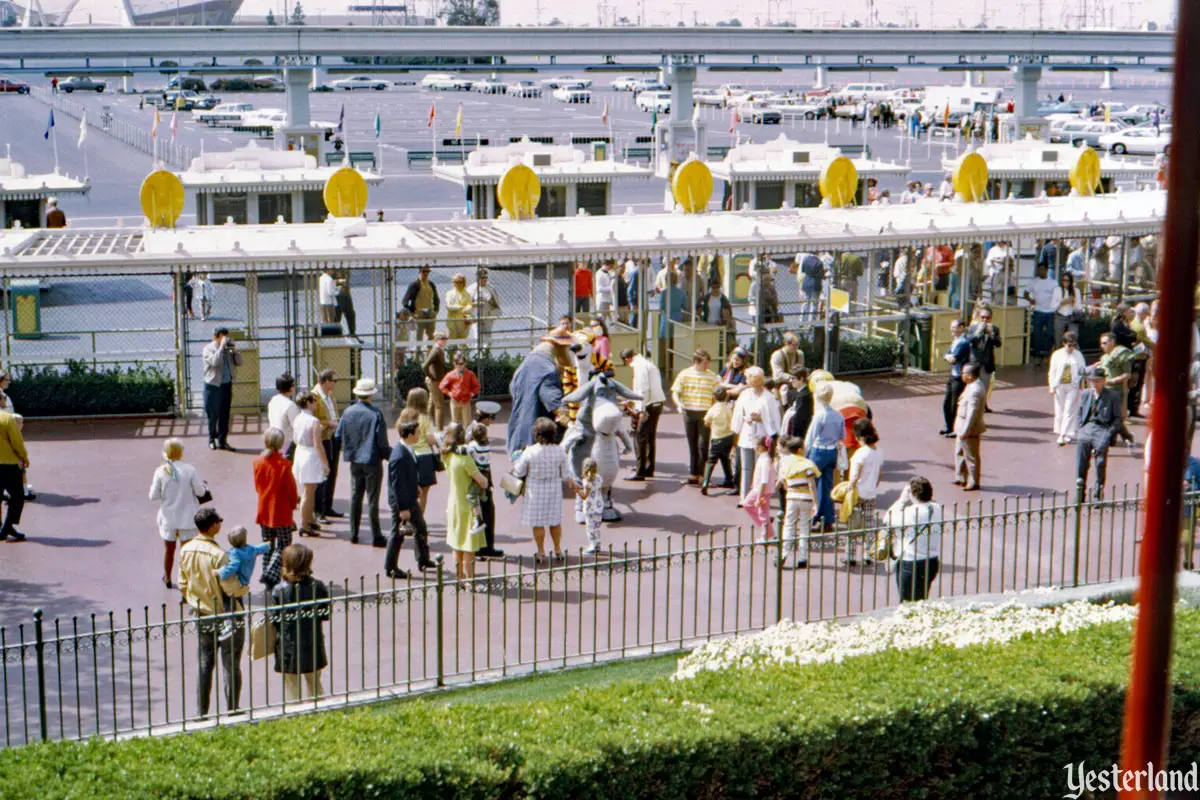
Photo by Charles R. Lympany, circa 1967, courtesy of Chris Taylor Second generation ticket booths, from Main Street Station |
||||
|
In the early 1960s, Disneyland replaced the original booths with a second generation. The new, larger booths still had flat roofs, but the ticket windows faced the front. |
||||
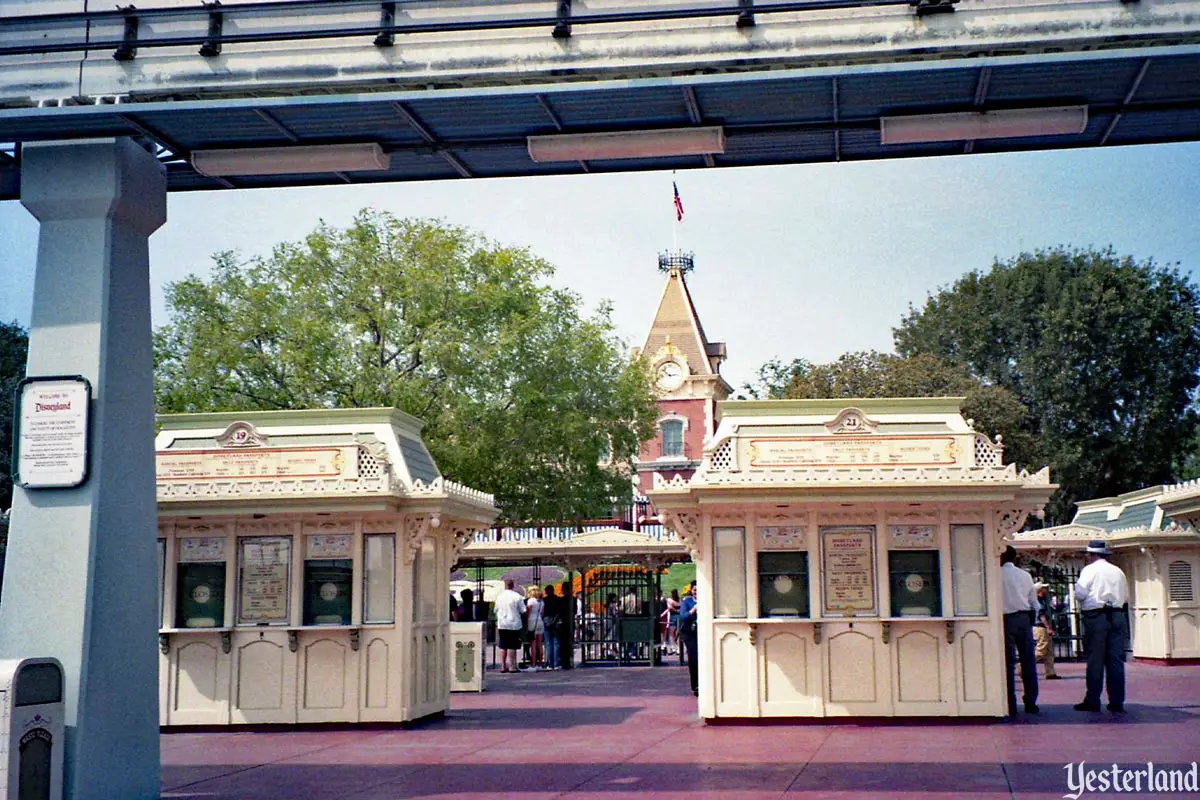
Photo by Chris Bales, 2000 Third generation ticket booths in 2000, at the end of their lives at Disneyland |
||||
|
In 1980, Disneyland built twelve entirely new ticket booths — the third generation — as highlighted at the top of this article. As with the second generation, each booth had two front-facing ticket windows. This time, each booth had a mansard roof and Victorian gingerbread trim. Instead of relying on windows and roof overhangs to keep the interior bearable for the cast member, each booth had air conditioning. The third generation would be used for for 20 years — with many changes during that time. In 1982, unlimited attraction passports replaced ticket books. Next came the introduction of annual passes, initially just for Magic Kingdom Club members in 1983, and then for all guests in 1984. It meant more decisions for guests. A single-day passport? A multi-day passport for how many days? An annual pass, and, if so, which one? When Disneyland’s parking lot became the construction site for Disney’s California Adventure, it was time for a fourth generation. |
||||
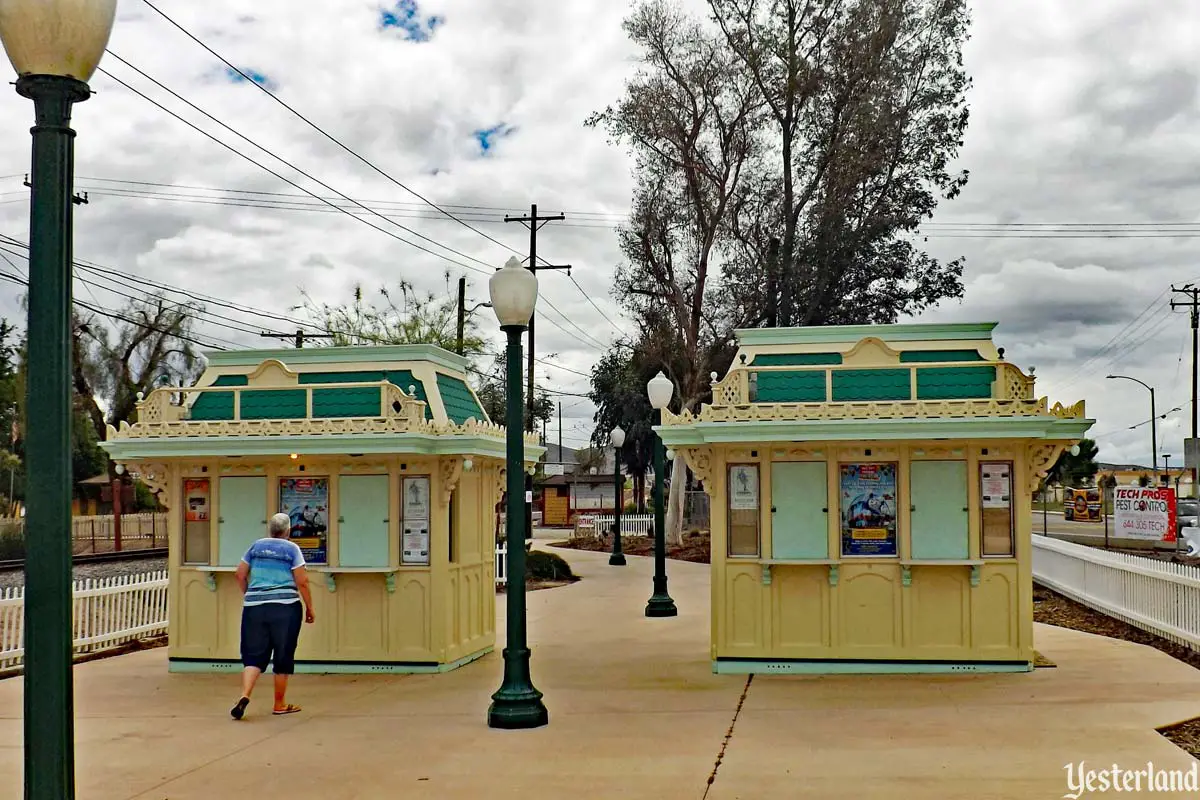
Photo by Brian Martsoff, 2016 Former Disneyland ticket booths at the Southern California Railway Museum |
||||
|
Some of the third generation ticket booths have survived, either in private collections or serving a purpose elsewhere. It’s not known how many. Two of them are now at the Southern California Railway Museum (former Orange Empire Railway Museum) in Perris, California. |
||||
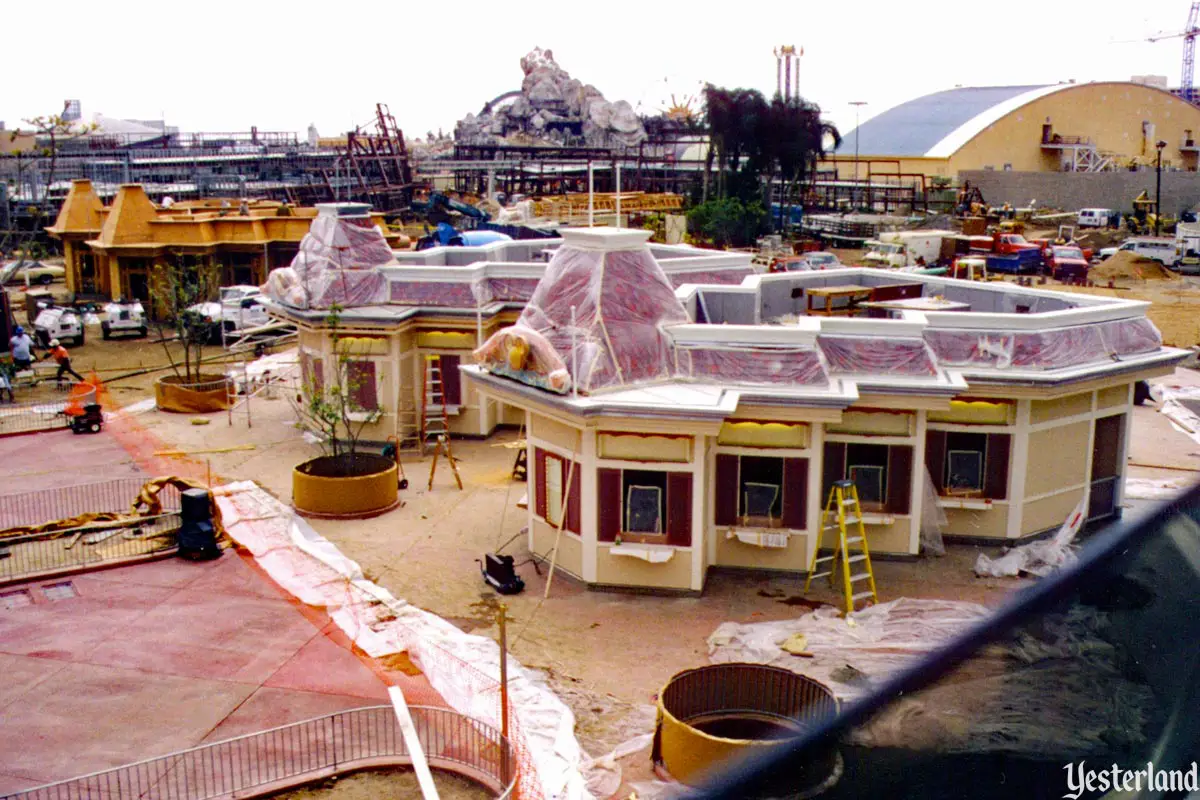
Photo by Tony “WisebearAZ” Moore, 2000 Fourth generation ticketing structures under construction |
||||
|
The fourth (and current) generation really can’t be called ticket booths. To serve two theme parks, the Disneyland Resort has eight sizable structures, each with eight ticket windows. |
||||
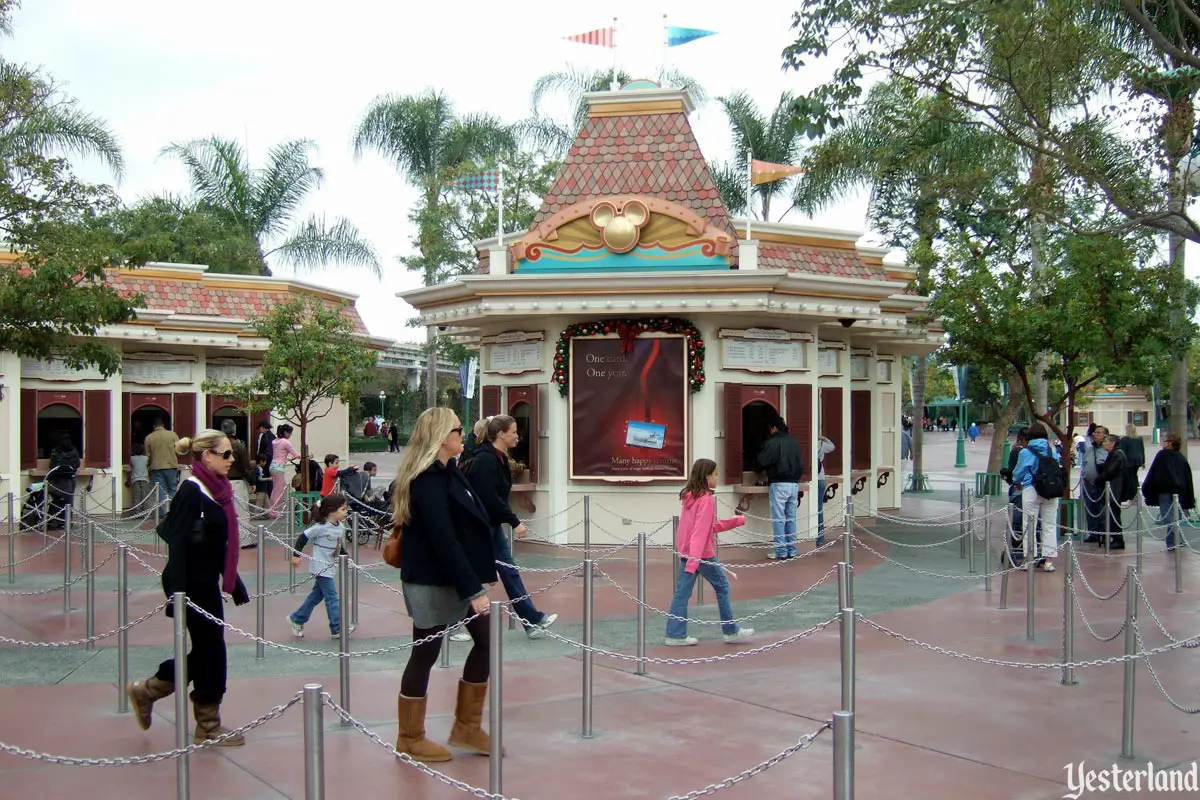
Photo by Allen Huffman, 2007 Queue for the ticket windows |
||||

Photo by Allen Huffman, 2008 Four of the 64 tickets windows |
||||
|
Four structures face Downtown Disney. These primarily serve the guests arriving on trams from the parking structures. The other four face the Harbor Boulevard loading areas. These serve guests arriving from the Toy Story parking lot and non-Disney hotels in Anaheim and Garden Grove. The decision process for guests became much more complicated. Although one-day, one-park tickets were still an option, guests faced a range of multi-day ticket options with and without Park Hopping, as well as various annual passes, some only available to Southern California residents. Credits cards generally replaced cash and personal checks. Buying annual passes — or even just multi-day tickets — for a whole family can run into thousands of dollars. Disneyland cancelled its annual pass program on January 14, 2021, ten months after the parks closed due to the COVID-19 pandemic, but has reopened the program, now called Magic Key, on and off since then. |
||||
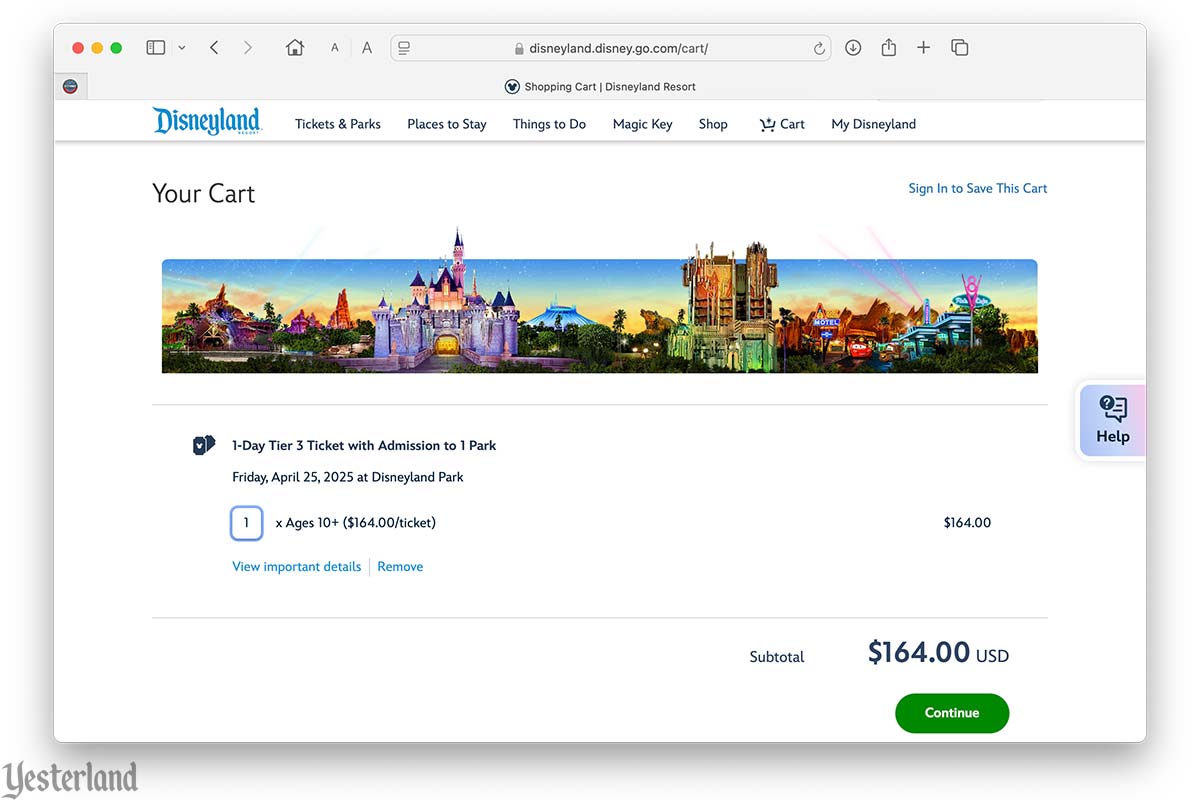
Screen capture from official Disneyland Resort website “Ticket booth” on your computer or smartphone |
||||
|
Will there be a fifth generation of ticket booths in the future? In a way, there already is. Smartphones and web browsers have largely eliminated the need for ticket windows. You now have your own “ticket booth” in your pocket or purse. If you spend a long time deciding whether or not to add additional-cost features such as Park Hopping and Lightning Lane Multi Pass, you aren’t holding up people waiting behind you. Meanwhile, the large ticketing structures with way too many ticket windows continue to take up valuable real estate. Maybe some of them could be converted into Starbucks. It seems you can never have too many of those. |
||||
|
|
Click here to post comments at MiceChat about this article.
© 2025 Werner Weiss — Disclaimers, Copyright, and Trademarks Updated April 25, 2025 |
|||